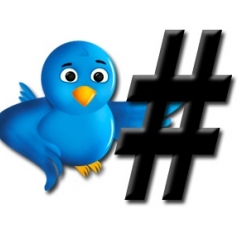Articles and News
HOW TWEET IT IS: FIVE QUICK TIPS TO MAKE BETTER USE OF HASHTAGS January 23, 2013 (0 comments)

Merrick, NY—Confused between the @ and the # symbols on Twitter? Even if you know when to use each, do you know the most effective way to use them?
To review, the @ symbol is a person or entity. The # symbol, by contrast, is a trend or topic. So, if you wanted to show engagement ring trends in Hollywood, you (@LuxuryJeweler) might use a hashtag reading #celebrityengagementrings.
But when using a hashtag, some simple steps will make your tweets that much more effective. B2Bmarketing.net recently offered some simple tips for better use of the hashtag. Here’s a summary of some of the points B2B makes; click on this link for more.
1. What’s the point of your hashtag? By using the hashtag, you’re associating with the theme denoted by the tag. So if you are showing a photo of jewelry by a designer you feature, or showing a photo of that designer’s jewelry in a popular TV show, the #designername tag will associate with the designer and a tag like #Californication, for example, would associate with that particular TV show.
2. Less is more. Because each hashtag enters (or starts) its own “conversation,” you may be tempted to add as many tags as possible so that your tweets show up on more searches. But that doesn’t necessarily gain “likes” or followers; instead, it’s perceived as spam. And it’s hard to read. Best option is to choose the one tag that is most relevant and focus on that. Two tags are still acceptable (if relevant), but three is really pushing it and don’t even think about more than three in a post. Best: #celebrityengagementrings. Ok: #celebrity#engagementrings. Never: #celebrity#engagement#ringsin#hollywood.
3. Brevity is the soul of wit. It’s also the soul of tweet. Which is easier to read? #shortandsweet or #alwayskeepyourhashtagsasshortandsweetaspossible. Enough said.
4. Don’t change your hashtag halfway through your campaign. Users hate having to flip between two tags. Think your tag through the first time and then stick with it.
5. Remember that once your conversation is out there, it’s fair game—so make sure the tag is as foolproof as possible! For example, British vocalist Susan Boyle announced a new album with the seemingly innocuous #susanalbumparty, which of course was immediately truncated to “bum party,” meaning a party to celebrate (or show) one’s rear end. The original tweet was later amended to #SusanBoylesAlbumParty, which clearly spells out what the celebration—and conversation—was meant to be. Click here for a humorous look at other hashtag disasters.
Top image: firepolemarketing.com







